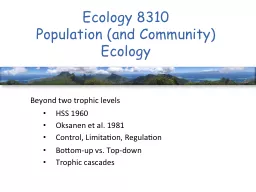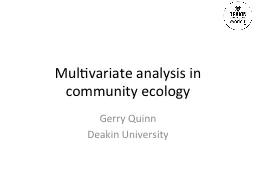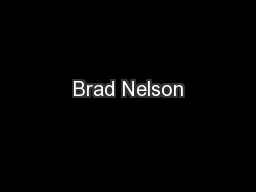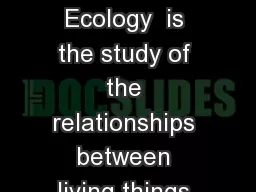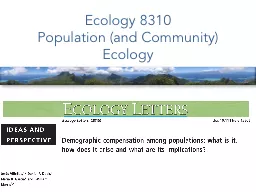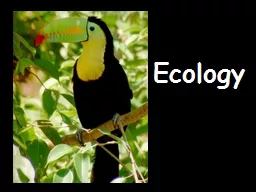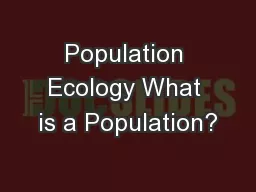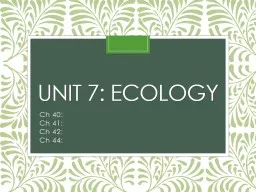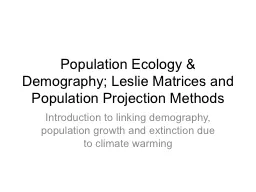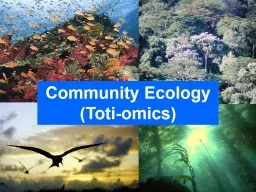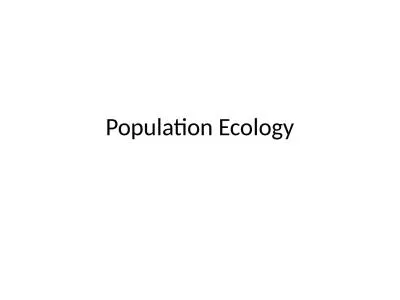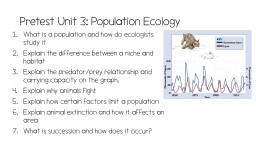PPT-Ecology 8310 Population (and Community) Ecology
Author : min-jolicoeur | Published Date : 2018-03-07
Beyond two trophic levels HSS 1960 Oksanen et al 1981 Control Limitation Regulation Bottomup vs Topdown Trophic cascades Beyond two trophic levels Why is the world
Presentation Embed Code
Download Presentation
Download Presentation The PPT/PDF document "Ecology 8310 Population (and Community) ..." is the property of its rightful owner. Permission is granted to download and print the materials on this website for personal, non-commercial use only, and to display it on your personal computer provided you do not modify the materials and that you retain all copyright notices contained in the materials. By downloading content from our website, you accept the terms of this agreement.
Ecology 8310 Population (and Community) Ecology: Transcript
Download Rules Of Document
"Ecology 8310 Population (and Community) Ecology"The content belongs to its owner. You may download and print it for personal use, without modification, and keep all copyright notices. By downloading, you agree to these terms.
Related Documents

